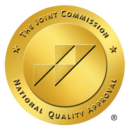Domestic violence and substance abuse are two serious issues that often affect individuals and families at the same time. When these problems occur together, the situation becomes more complicated and dangerous. Understanding how these issues connect can help people recognize warning signs and find appropriate help.
Many people wonder whether addiction causes violence in the home or if living in a violent environment leads to increased substance use. Research shows there’s a strong connection between domestic violence and substance abuse, but the relationship works both ways. At Discovery Institute in Marlboro, New Jersey, we work closely with individuals and families facing these challenges, providing comprehensive support that addresses both issues together.
The statistics tell a concerning story. According to recent data, these two problems intersect far more often than many people realize, creating cycles that can be difficult to break without professional intervention.
Understanding the Connection Between Domestic Violence and Substance Abuse
Domestic violence refers to a pattern of behaviors used by one person to gain or maintain power and control over another person in a close relationship. This includes physical harm, threats, emotional abuse, isolation, and controlling finances. Substance abuse means using alcohol, drugs, or other substances in ways that harm a person’s health or daily life.
The National Institute on Drug Abuse (NIDA) reports that substance use appears in approximately 40% to 60% of domestic violence incidents. This connection shows up in several ways:
- Bidirectional relationship: Violence can lead to substance use as a coping mechanism, while substance use can increase the risk of violent behavior
- Shared risk factors: Both issues often stem from similar underlying problems like trauma, mental health conditions, or family history
- Escalation patterns: When both problems exist together, they tend to make each other worse over time
Research from the Centers for Disease Control and Prevention (CDC) shows that people living in homes with domestic violence are significantly more likely to develop substance use problems compared to those in non-violent relationships. The trauma of experiencing or witnessing violence can drive people toward alcohol or drugs as a way to numb emotional pain.
At the same time, substance abuse and domestic violence cases often involve more severe injuries and higher rates of repeat incidents. When someone uses alcohol or drugs, their judgment becomes impaired, and their ability to control aggressive impulses decreases.
How Substances Affect Violence Risk
Alcohol and domestic violence have a particularly strong connection. Alcohol affects the brain’s ability to control impulses and make clear decisions. When someone drinks heavily, they’re more likely to act on angry feelings or become aggressive during conflicts.
Different substances create different risks:
- Alcohol: Lowers inhibitions and impairs judgment, making violent outbursts more likely during arguments
- Stimulants: Can cause paranoia, irritability, and sudden mood changes that lead to aggressive behavior
- Depressants: May increase emotional numbness initially, but can lead to unpredictable mood swings
However, substance use doesn’t cause violence by itself. Most people who drink or use drugs never become violent. The abusive use of drugs becomes dangerous when combined with other risk factors like a history of trauma, mental health issues, or learned patterns of controlling behavior.
Domestic violence with alcohol often follows predictable patterns. Tension builds during periods of heavy drinking, conflicts escalate when judgment is impaired, and temporary calm returns when the person sobers up and promises to change.
Recognizing the Cycle
Substance abuse and family violence often follow repeating cycles that become harder to break over time. Understanding these patterns helps explain why both problems persist even when people want to change.
Tension Building Phase: Stress increases, along with substance use. Family members may feel like they’re “walking on eggshells” to avoid triggering an argument or violent episode.
Crisis Phase: Substance use peaks during conflicts. Alcohol and domestic abuse intersect most dangerously here, when impaired judgment leads to physical violence or serious threats.
Reconciliation Phase: Apologies follow, often with promises to quit drinking or using drugs. This temporary calm convinces family members that change is possible, but without professional help, the cycle typically repeats.
Children living in homes affected by both issues face particular risks. The Substance Abuse and Mental Health Services Administration (SAMHSA) reports that exposure to both domestic violence and substance abuse increases children’s risk for mental health problems, academic difficulties, and developing their own substance use issues later in life.
Common Myths About Alcohol and Family Violence
Several misconceptions prevent people from understanding the true relationship between these issues:
- Myth: Alcohol causes domestic violence
Reality: Alcohol doesn’t cause violence, but it can lower inhibitions in people who already have aggressive tendencies - Myth: Stopping drinking will end the violence
Reality: Many people continue abusive patterns even after becoming sober, because violence is a learned behavior separate from substance use - Myth: Victims somehow provoke violence when their partner is intoxicated
Reality: No one is responsible for another person’s violent behavior, regardless of substance use
These myths can prevent families from seeking appropriate help. Domestic violence and alcoholism are separate issues that often occur together but require different types of intervention.
Getting Help for Both Issues
Safety comes first when domestic violence and substance abuse affect a family. Creating a safety plan involves identifying safe places to go, keeping important documents accessible, and knowing how to contact emergency services.
Domestic Violence and Substance Abuse Resources
- National Domestic Violence Hotline: 1-800-799-SAFE (7233)
- Crisis Text Line: Text START to 88788
- SAMHSA National Helpline: 1-800-662-HELP (4357)
Professional treatment works best when it addresses both domestic violence and substance abuse. Integrated programs help people understand how these issues connect in their specific situation and develop skills to address both problems.
At Discovery Institute in Marlboro, NJ, our treatment approach recognizes that alcohol and family violence often intertwine in complex ways. We provide trauma-informed care that addresses the underlying issues contributing to both problems, helping individuals and families break harmful cycles.
Domestic Violence and Substance Abuse FAQs
Alcohol can increase the risk of violent behavior by lowering inhibitions and impairing judgment, but it doesn’t cause violence in people who don’t already have aggressive tendencies.
Many people successfully address both issues simultaneously through integrated dual diagnosis treatment programs that provide trauma-informed care alongside addiction recovery services.
Research indicates that alcohol or drug use is present in approximately 40% to 60% of domestic violence incidents, though the exact percentage varies across different studies and populations.
Common signs include increased arguments after drinking or drug use, unpredictable mood changes, isolation from friends and family, and escalating threats or violence during intoxication.
Children exposed to both domestic violence and substance abuse face higher risks for emotional problems, academic difficulties, and developing their own mental health or substance use issues later in life.
Finding Hope and Healing
Recovery from both domestic violence and substance abuse is possible with appropriate support and treatment. Many people successfully break these harmful cycles and build healthier, safer lives for themselves and their families.
The journey often involves multiple steps: ensuring immediate safety, addressing trauma, learning new coping skills, and building supportive relationships. Integrated treatment programs recognize that domestic violence and substance abuse often share common roots and require coordinated care.
At the Discovery Institute, we understand the complex relationship between these issues and provide comprehensive support for individuals and families ready to make positive changes. Our evidence-based approach addresses both the addiction and trauma aspects of recovery, helping people develop the tools they need for lasting change.
Contact us to speak with a certified addiction counselor for a free evaluation and guidance on treatment options that address both substance abuse and domestic violence recovery needs.



